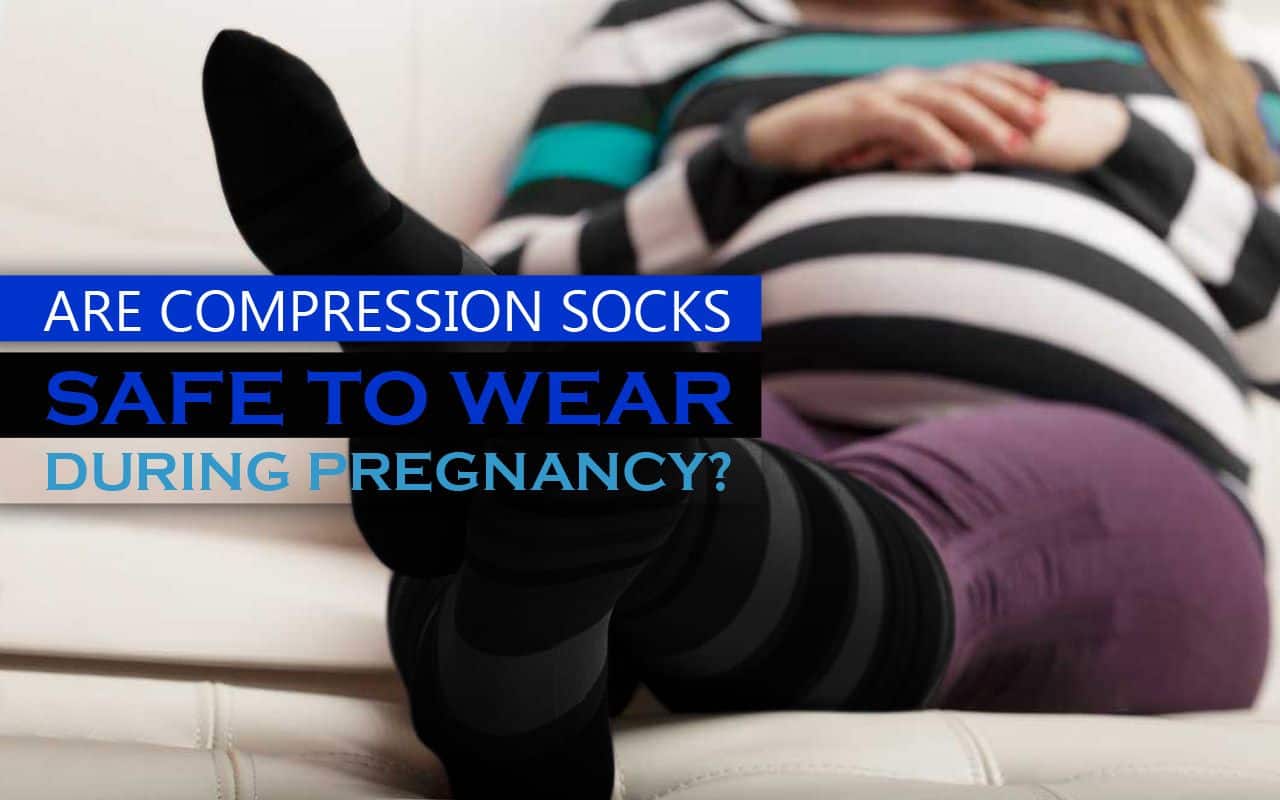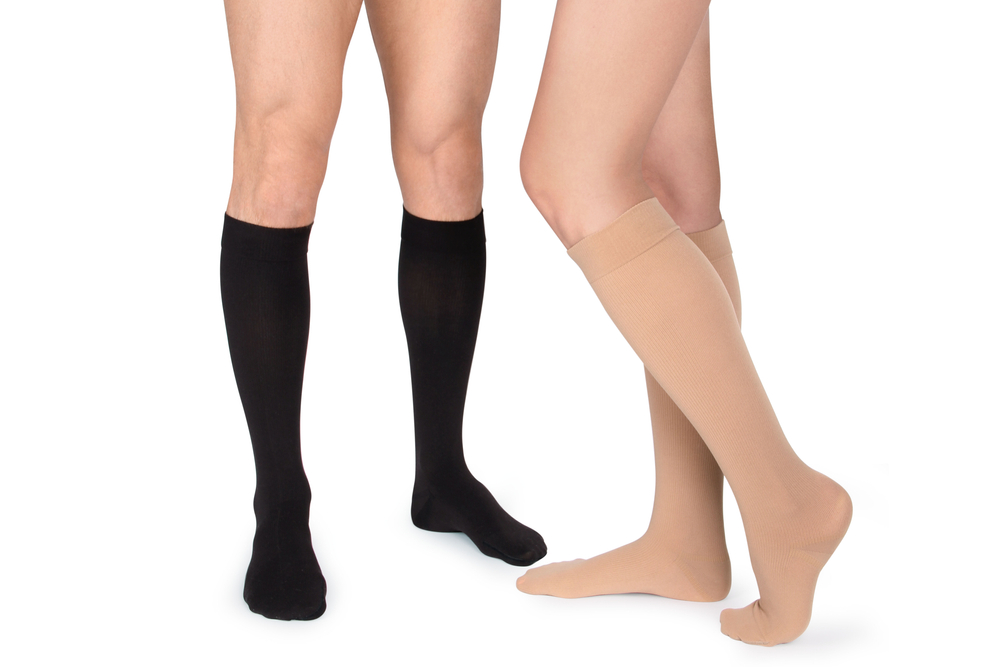

During pregnancy, the body undergoes significant changes, one of which is increased blood volume and circulation to support the growing fetus. This can sometimes result in swelling and discomfort in the legs, leading expectant mothers to consider various remedies.
Compression socks are commonly recommended to manage these symptoms due to their design to promote circulation and prevent swelling. They are specifically engineered to apply gentle pressure to the legs, which can facilitate blood flow back toward the heart and reduce the risk of blood clots.
While compression socks are often suggested for use during pregnancy, it is essential to understand their safety and how to choose the right type. Safety is a primary concern for pregnant women, making it critical to be informed about any potential risks and to follow guidelines from healthcare providers.
Not all compression socks are the same, and there are various compression levels and styles designed for different needs. Pregnant women should consider factors such as compression level, fit, and material when selecting compression socks to ensure both effectiveness and safety.
Compression socks are specially designed to provide support, improve blood flow, and mitigate discomfort during pregnancy. They help prevent common circulatory problems and swelling in the legs, offering comfort to expectant mothers.
Compression socks apply gentle pressure to the legs, which can enhance venous blood flow to the heart. This improvement in circulation is crucial during pregnancy as it can help in preventing blood clots and the associated risks. Maintaining good blood flow also contributes to minimizing the risk of swollen feet and legs, a common concern among pregnant women.
The consistent use of compression socks during pregnancy can aid in preventing varicose veins. These are veins that have become enlarged and twisted, potentially causing discomfort. Compression socks help by exerting steady pressure that promotes blood flow and helps stop blood from pooling in the legs, which can reduce swelling and the likelihood of developing varicose veins.
Deep vein thrombosis (DVT) is a serious condition that involves the formation of a blood clot in a deep vein, commonly in the legs. Pregnancy increases the risk of DVT due to changes in blood composition and flow. Wearing compression socks may reduce the risk by providing graduated compression that supports blood flow and lowers the chance of clot formation.

Compression socks are designed to improve circulation and can vary in compression levels, materials, and sizes to suit different needs. These socks are particularly beneficial during pregnancy to prevent swelling and reduce the risk of venous issues.
Graduated compression socks offer varying levels of tightness along the leg, with the most significant compression starting at the ankle and decreasing towards the knee. These are typically measured in millimeters of mercury (mmHg), with common compression levels ranging from 15-20 mmHg, 20-30 mmHg, to 30-40 mmHg.
They are often made from a blend of materials like nylon, cotton, polyester, spandex, or wool to provide elasticity and comfort. Sizing is critical for graduated compression socks, and it’s important that they fit properly to be effective.
Maternity compression socks are specifically designed to accommodate the needs of pregnant individuals. They can help manage swelling in the feet and ankles, a common occurrence during pregnancy.
These socks typically have a wider size range to accommodate changes in the body and may come in a variety of colors and patterns to match different preferences. The level of compression in maternity compression socks is usually moderate, ensuring safety and comfort for both the pregnant person and the developing fetus.
Anti-embolic stockings, also known as TED hose, are intended for non-ambulatory patients or those with limited mobility. They have a uniform compression level, unlike graduated compression socks, and are designed to prevent the formation of blood clots, particularly deep vein thrombosis (DVT).
While these stockings may resemble those worn during pregnancy, the level of compression and the specific use-case differs. Anti-embolic stockings are commonly made from a nylon blend and come in sizes that are based on the length and circumference of the leg to ensure proper fit.
When choosing compression socks during pregnancy, it is essential to consider the level of pressure, the proper size and fit, and the comfort of the material.
Compression socks are categorized by the amount of pressure, measured in millimeters of mercury (mmHg), they provide. For pregnant individuals, moderate compression levels, typically ranging from 15-20 mmHg or 20-30 mmHg, offer a balance between a gentle pressure and effective support. Graduated compression socks are especially beneficial as they deliver firmer support at the ankle that decreases towards the knee, promoting circulation.
The correct size is crucial for compression socks to be effective and safe. Ill-fitting socks—either too tight or too loose—will not provide the intended benefits or could even be harmful. Most brands, such as Charmking Compression Socks or SB SOX Compression Socks, offer a comprehensive size guide. Taking accurate measurements of the ankle, calf, and sometimes thigh, as well as shoe size, will ensure a good fit.
The comfort of compression socks is influenced by their material composition. Options typically include nylon, cotton, polyester, spandex, and even eco-friendly materials like bamboo. Nylon and spandex often provide the necessary elasticity for compression, while cotton and bamboo can increase the comfort and breathability of the socks. Bombas Everyday Compression Socks is an example of a brand that blends materials to balance comfort and compression.
Compression socks are a safe option for most pregnant women to help manage symptoms such as swollen feet and leg pain. However, certain precautions should be taken to ensure their use does not introduce unnecessary risks.
It’s essential to consult with an ob/gyn or a podiatrist before starting the use of compression socks during pregnancy. They can assess individual risk factors such as preeclampsia or lymphedema and guide proper usage. The American College of Obstetricians and Gynecologists advocates for a personalized approach to preventive measures against compression-related complications.
Compression socks should ideally be worn during the day, especially when prolonged standing or sitting is anticipated. Pregnant women should avoid wearing them to bed unless advised by a healthcare provider. An individual assessment during the third trimester, when edema is most pronounced, can determine the optimal periods for wear.
While compression socks are designed to reduce discomfort and risks like blood clots, they can introduce problems if not used correctly. Pregnant women should observe for signs of discomfort, pain, redness, or infection. Swelling should not worsen, and any increase in leg pain or discomfort should prompt immediate removal and consultation with a lymphedema therapist or healthcare professional.
Wearing compression socks properly is crucial, especially during pregnancy, to reduce swelling and maintain comfort. Ensuring the correct size and material choice can enhance the benefits of compression socks for expectant mothers.
Careful attention to these specifics will support their efficacy and longevity, helping expectant mothers experience the benefits of compression therapy.
Pregnancy is a significant time that necessitates thoughtful lifestyle adjustments to maintain health and comfort. Women may face varied physical demands, from managing discomforts like morning sickness and swollen feet to considering the impact of travel during pregnancy.
Engaging in regular physical activity during pregnancy brings numerous benefits, including improved mood, reduced fatigue, and enhanced endurance that can be helpful during childbirth. Health professionals commonly recommend low-impact activities such as swimming or prenatal yoga to support overall wellness. Pregnant women should aim for moderate exercise but avoid activities with heightened risk of falls or abdominal trauma.
Recommended Activities:
1. Swimming: reduces joint and muscle strain
2. Prenatal Yoga: increases flexibility and breathing control
3. Walking: maintains cardiovascular health
4. Pelvic Floor Exercises: assist in recovery postpartum
Pregnancy often brings a variety of discomforts, including aching feet, nausea, and dizziness. To alleviate some of these symptoms, maintaining a balanced diet and staying hydrated are essential. For aching feet and swelling, appropriately fitted footwear and the use of compression socks can provide necessary support and improve blood circulation.
Comfort Tips:
1. Frequent small meals: mitigates nausea and morning sickness
2. Adequate hydration: reduces dizziness and supports amniotic fluid levels
3. Rest: positions to distribute weight gain evenly and avoid additional strain
When traveling while pregnant, planning is key to ensure safety and comfort. It is generally safe for women with low-risk pregnancies to travel, especially during the middle trimester. Pregnant women should wear comfortable clothing, take regular breaks to walk and stretch, and carry water to stay hydrated. For those prone to nausea or dizziness, it may be strategic to plan trips during times when these symptoms are minimal.
Travel Checklist:
1, Loose-fitting layers: maintains warmth and adjust to changing temperatures
2. Supportive seating: provides back support and prevents stiffness
3. Access to nutritious snacks: keeps energy levels stable
Compression socks are a widely accepted method to support the health of expectant mothers by reducing swelling and improving circulation. It’s important for pregnant women to understand the specifics of their use.
Yes, it is generally safe for women to wear compression socks at any stage of pregnancy. These socks are helpful for managing symptoms such as leg pain and swelling.
Compression socks can be worn daily to help manage symptoms such as edema and discomfort in the legs. Wear time should be discussed with a healthcare provider to determine what’s best for each individual’s needs.
Wearing compression socks to bed is typically not recommended unless advised by a healthcare professional, as the primary goal of these socks is to assist with circulation while active.
For travel, especially during long flights or car rides, pregnant women should wear compression socks to reduce the risk of blood clots and swelling by promoting circulation.
The most commonly recommended compression level for pregnant women is 15-20 mmHg for comfort and efficacy without the need for a prescription.
Conditions such as peripheral neuropathy, peripheral arterial disease, or skin infections may contraindicate the use of compression socks. A healthcare provider should be consulted if there are any concerns or known conditions.